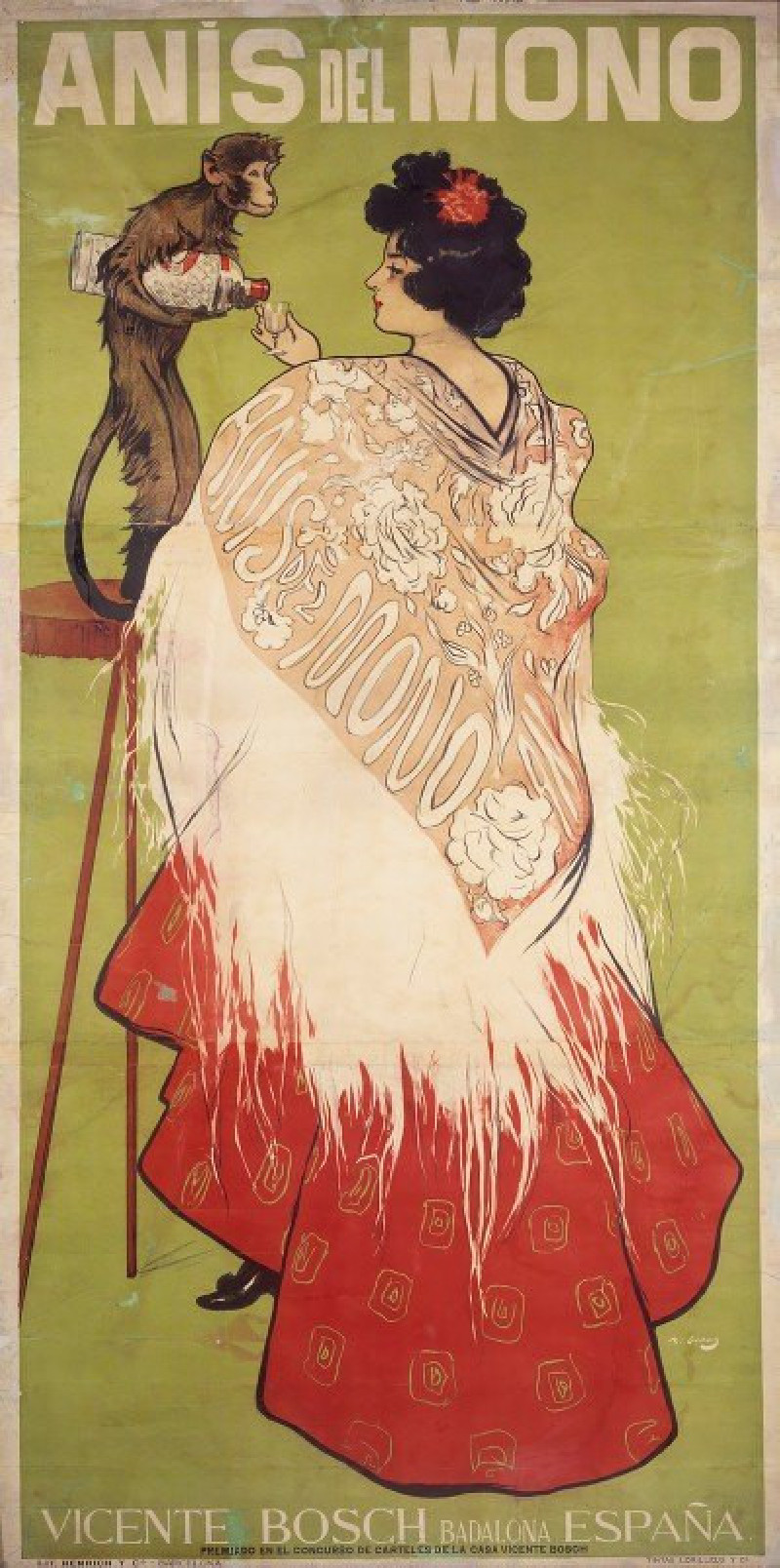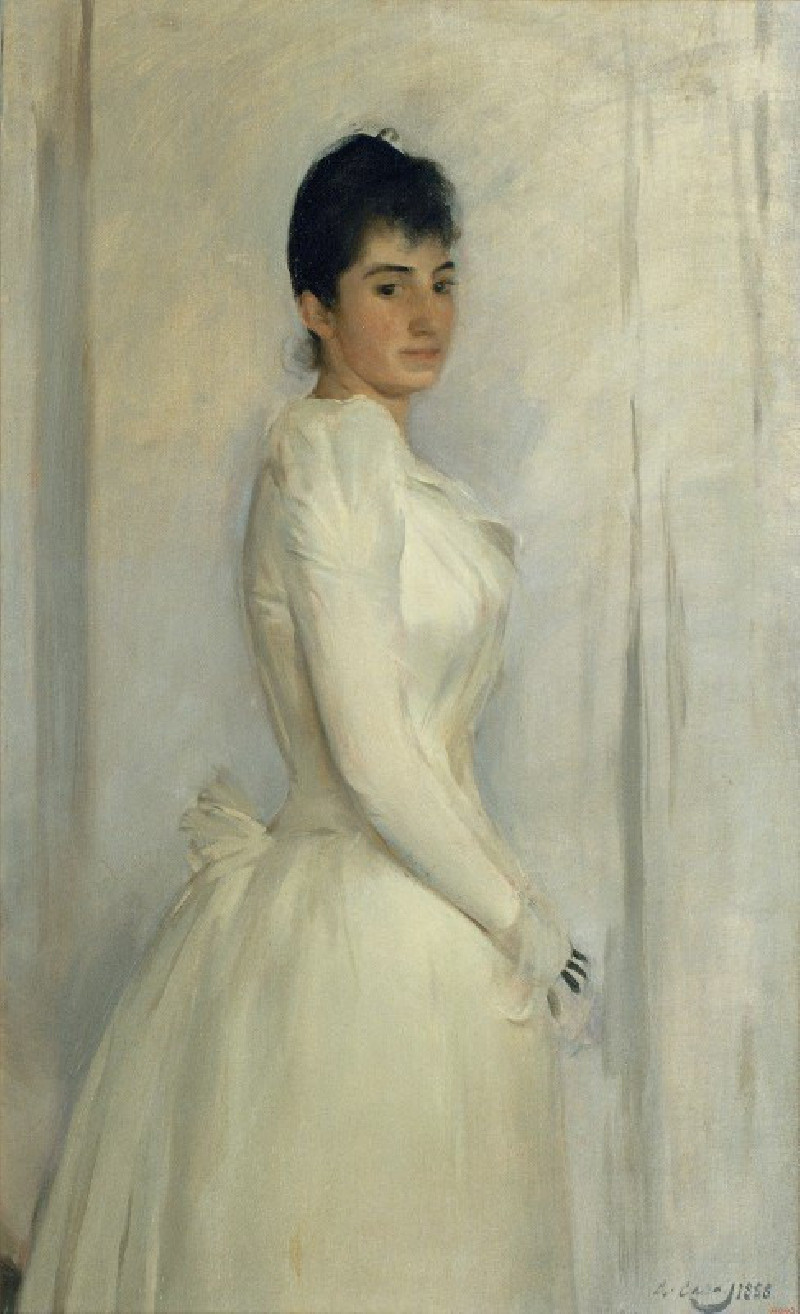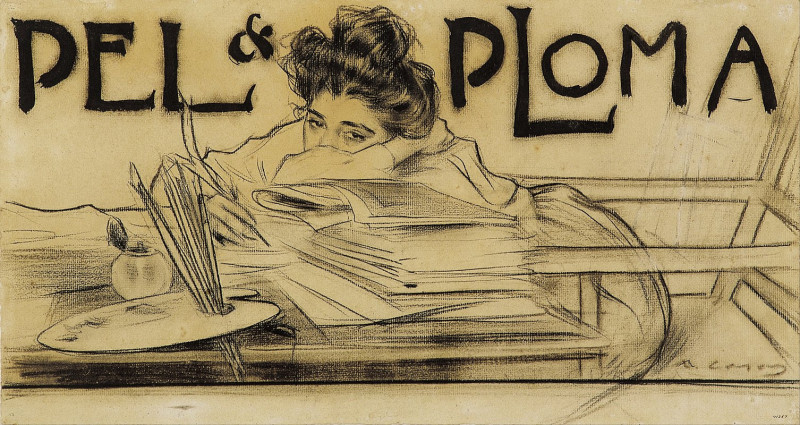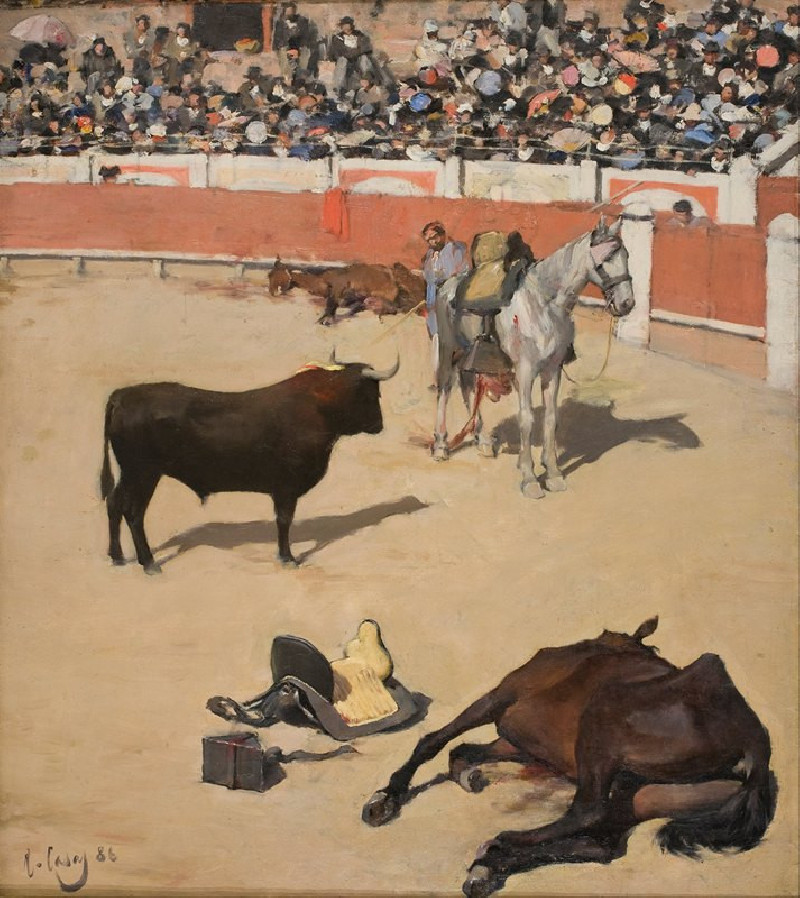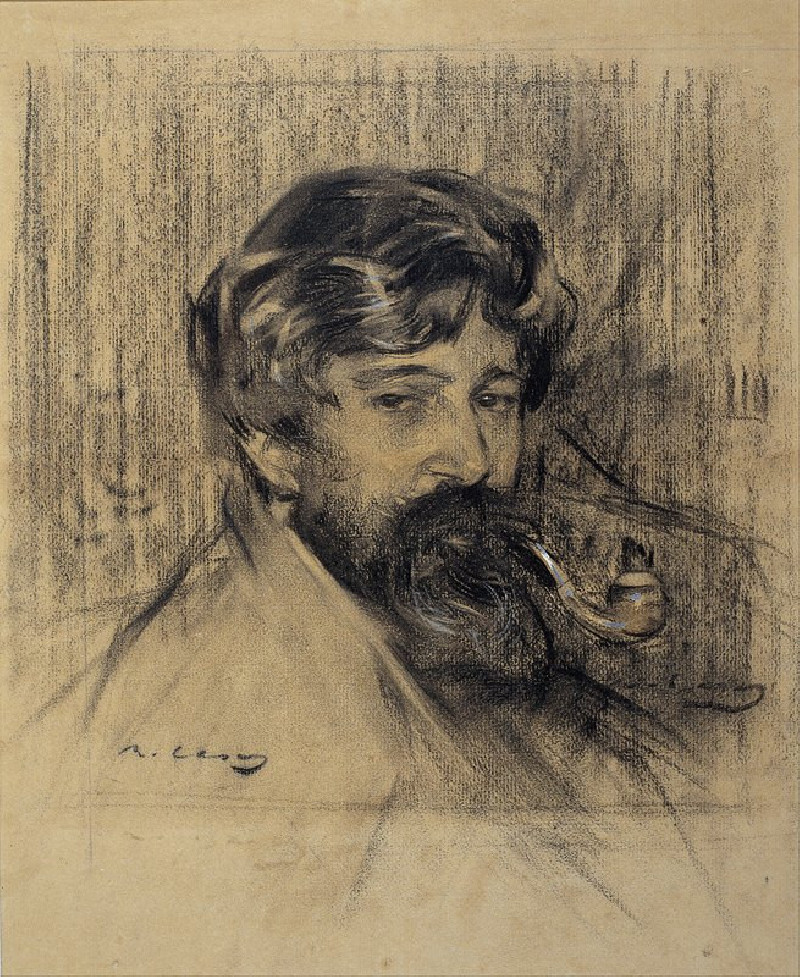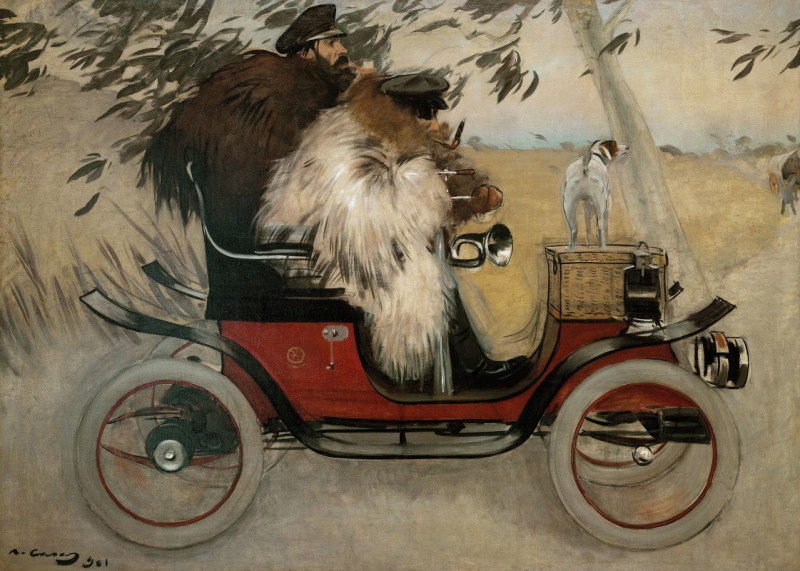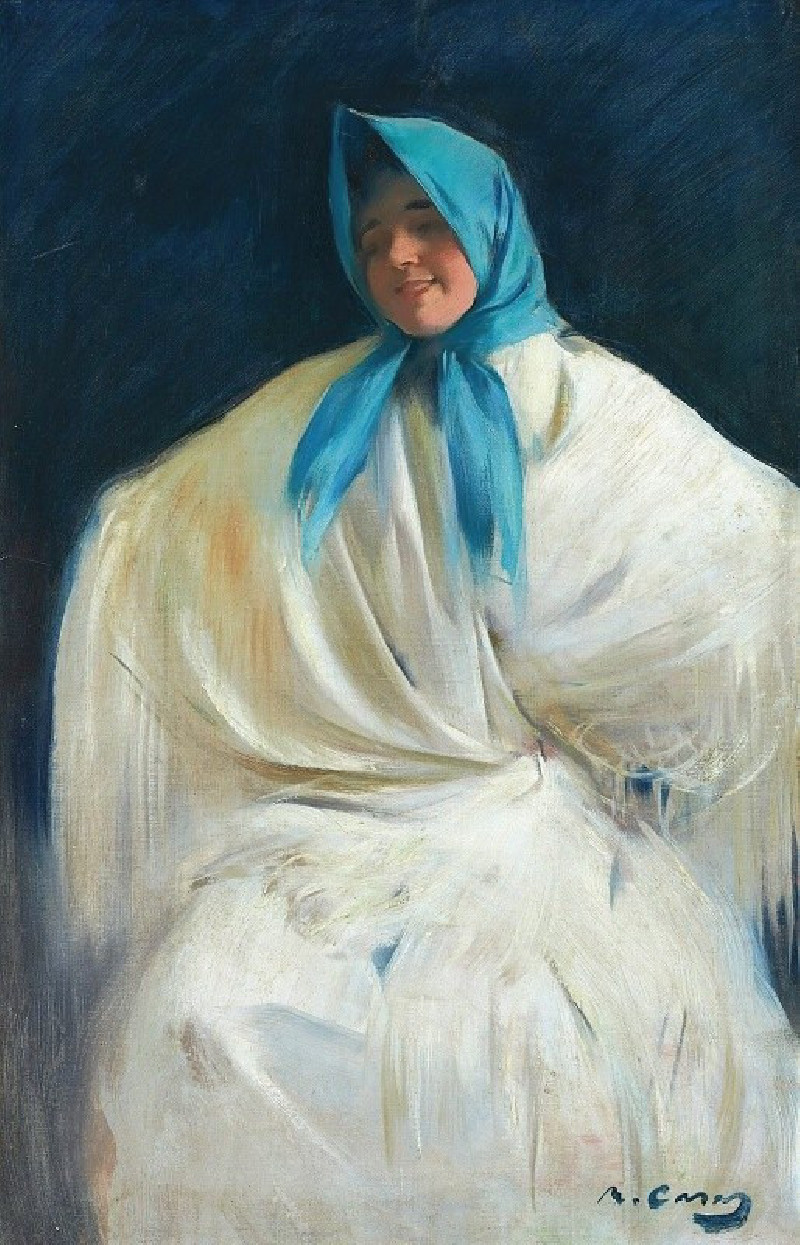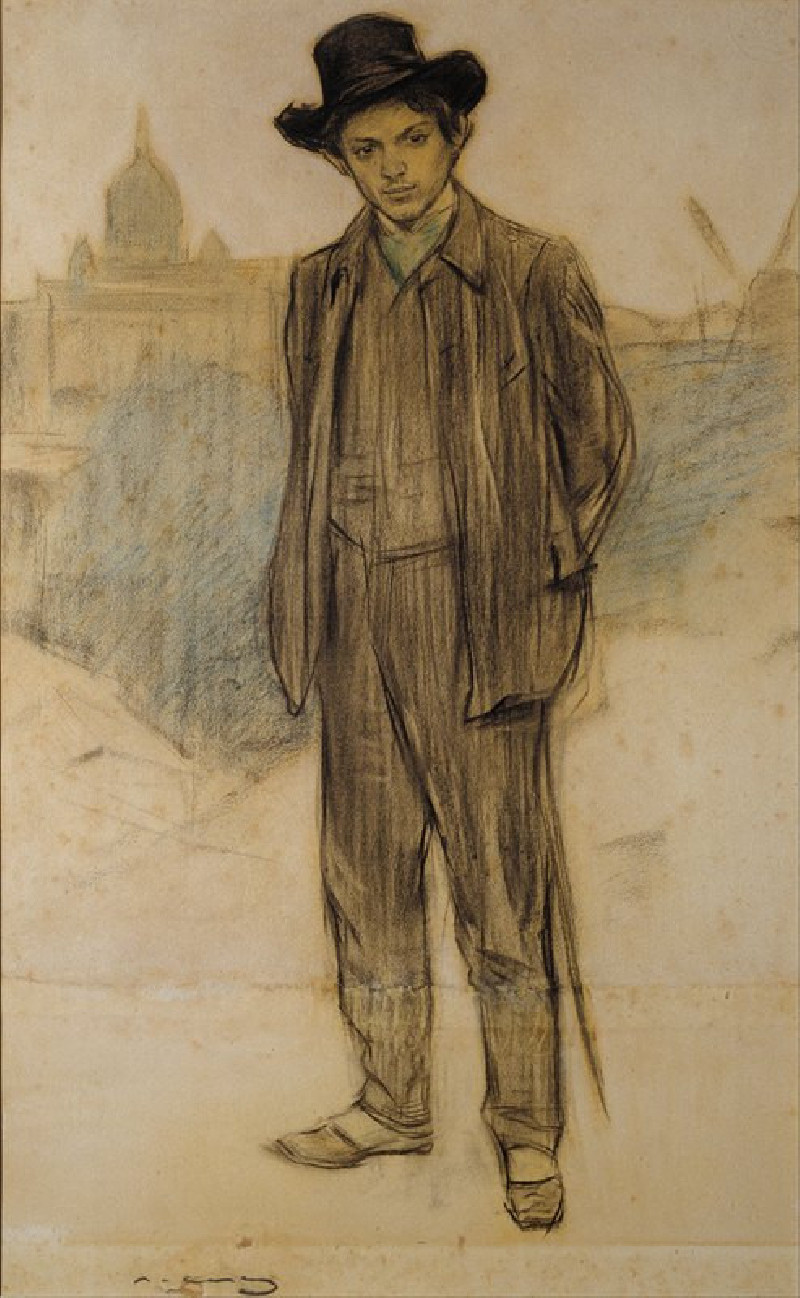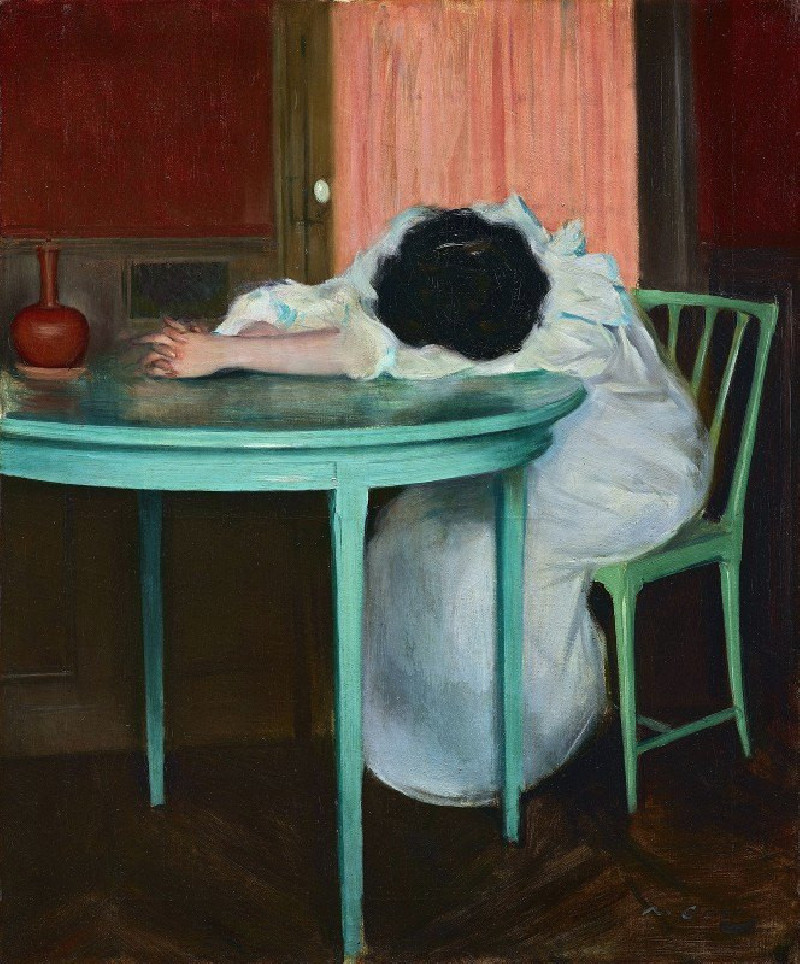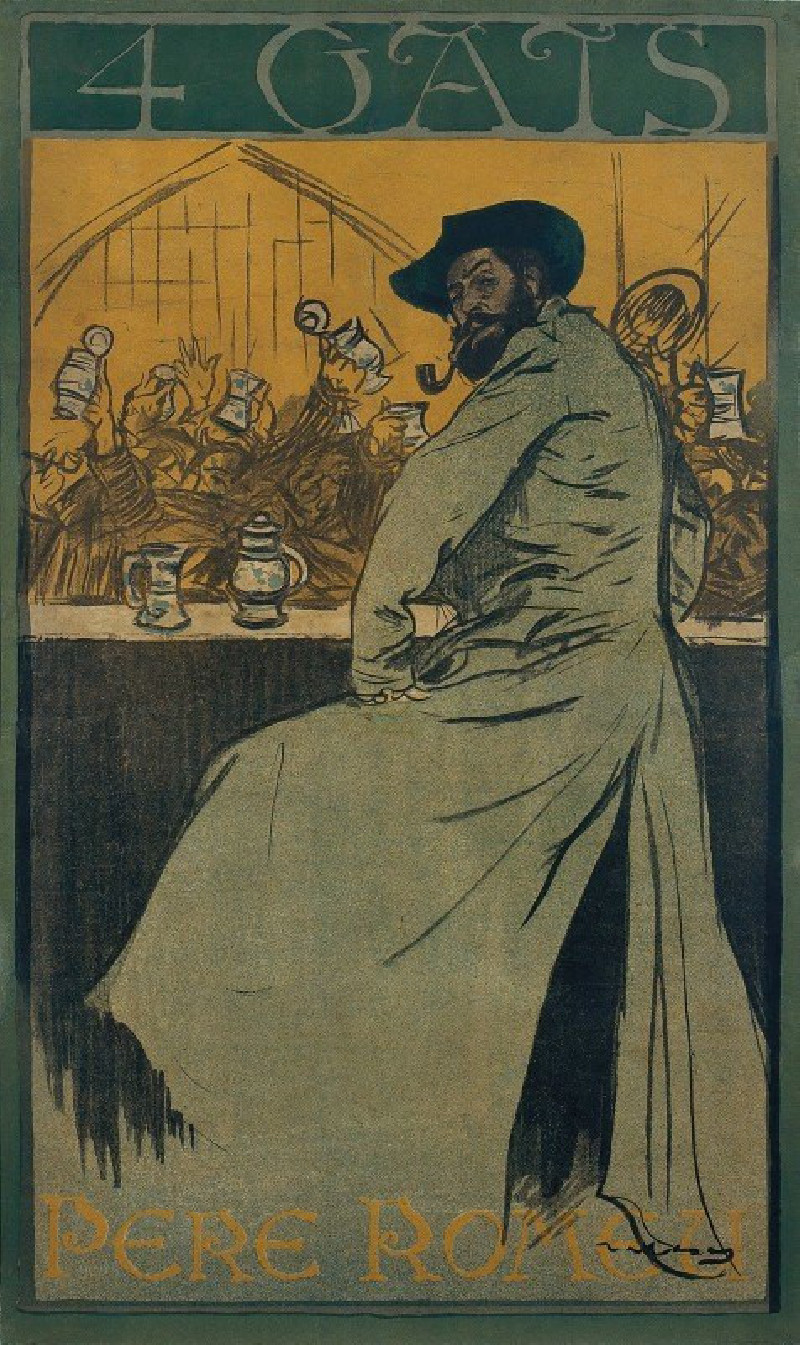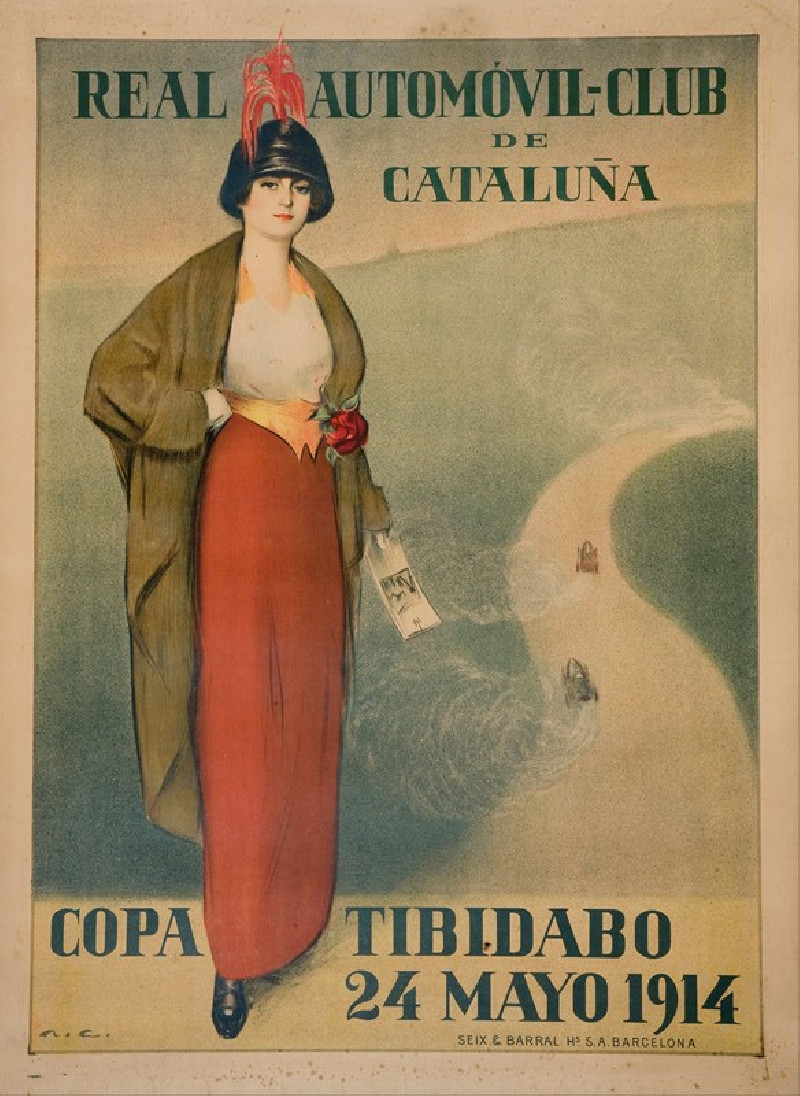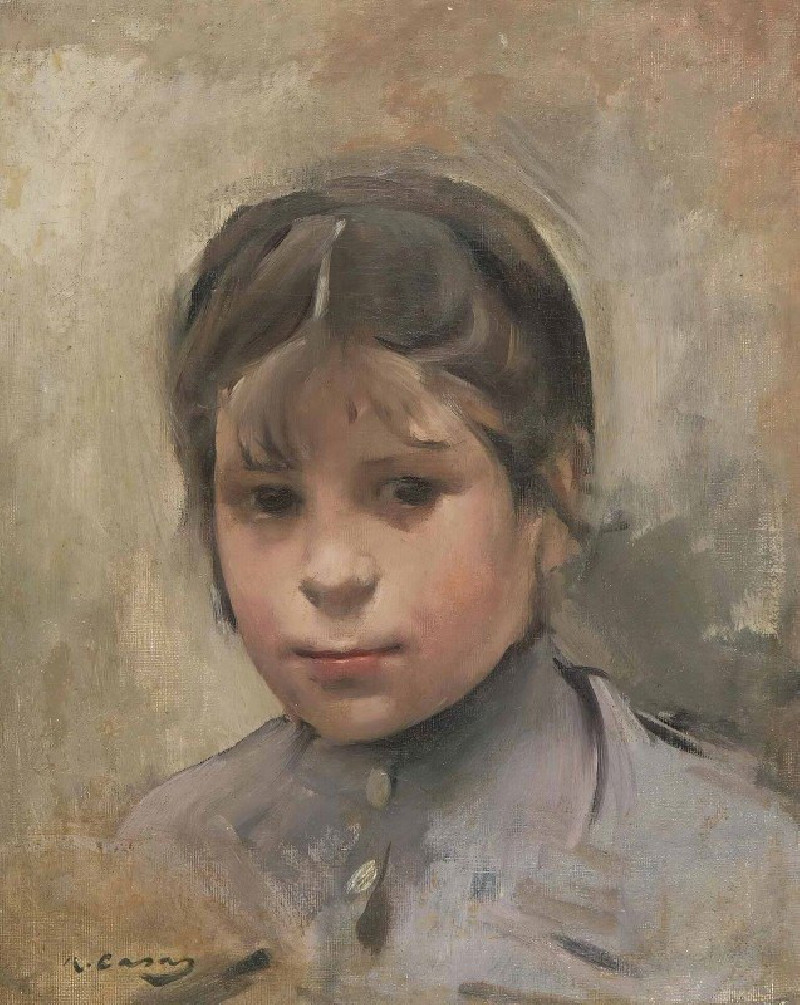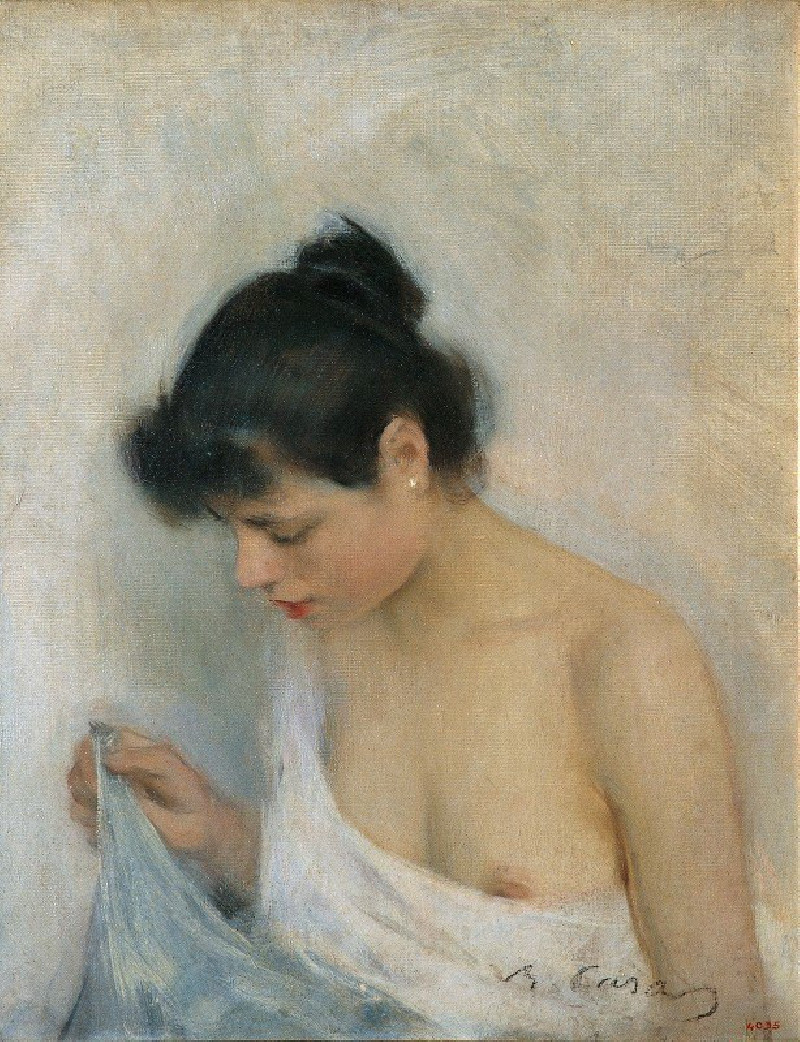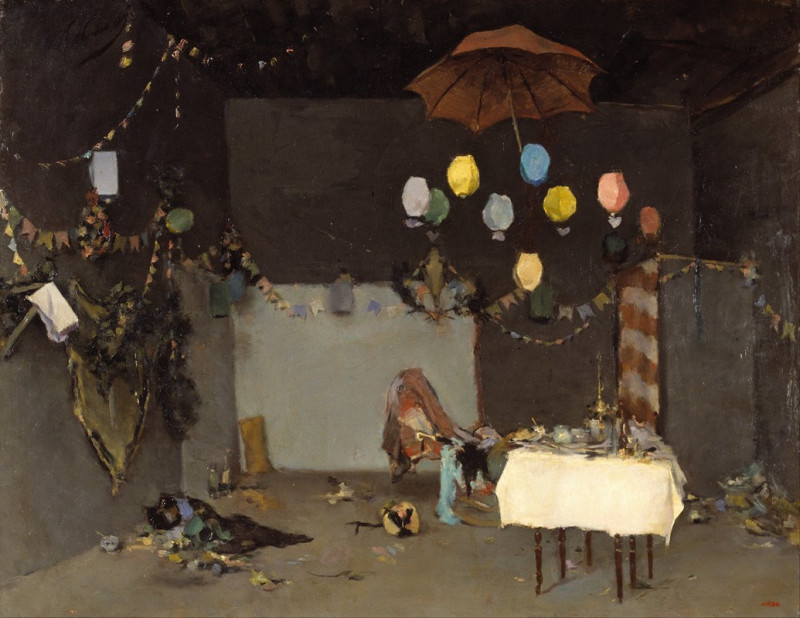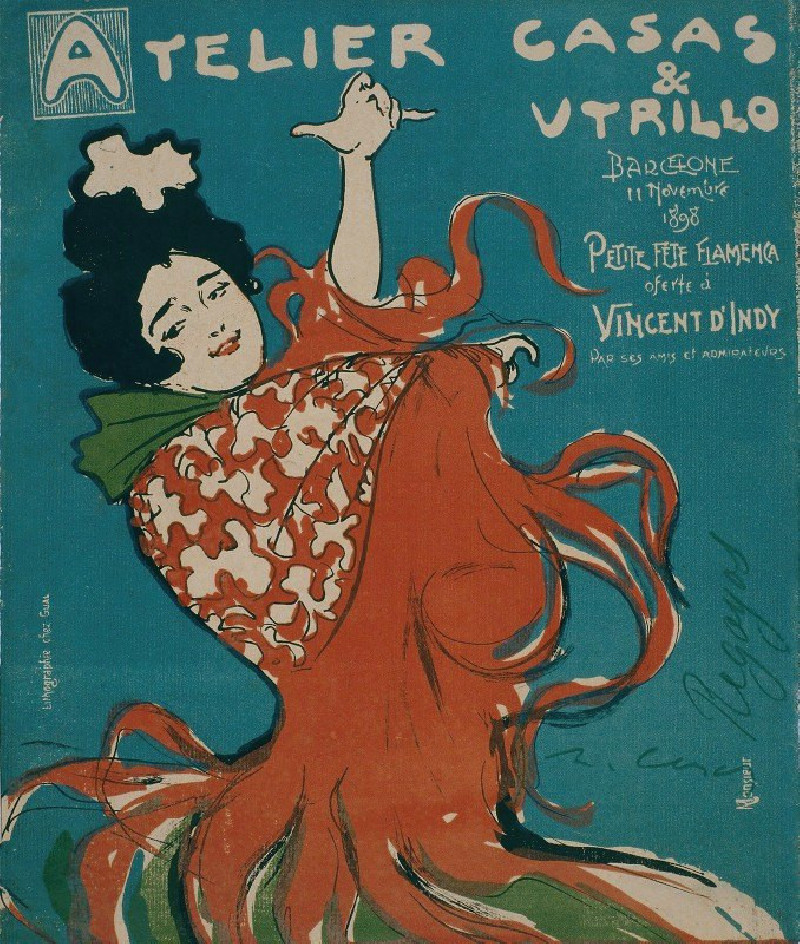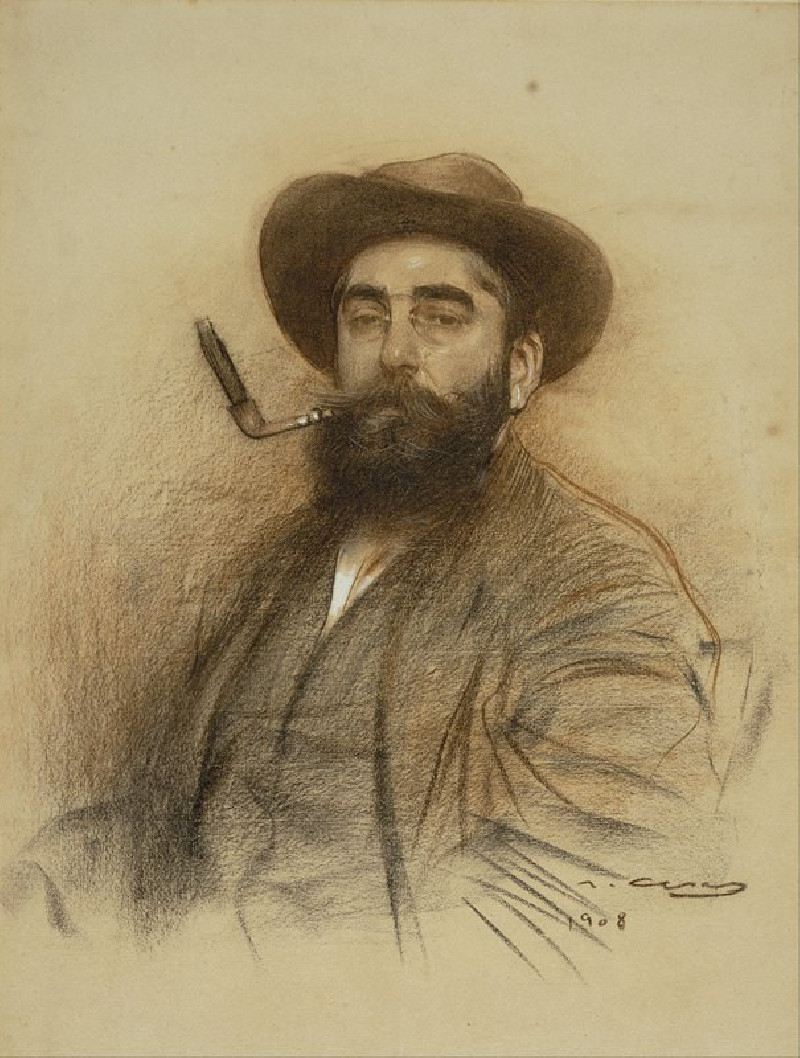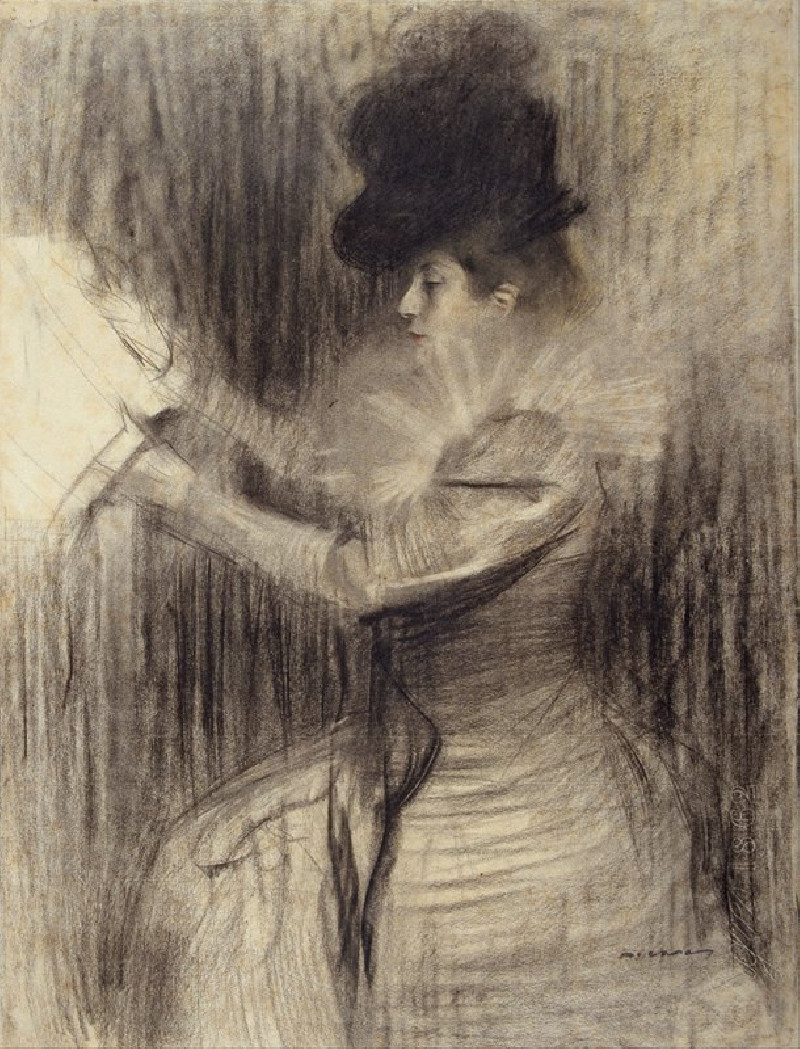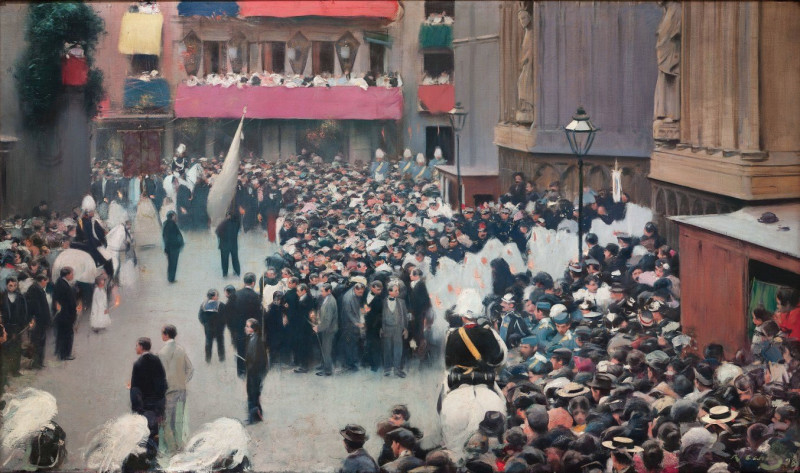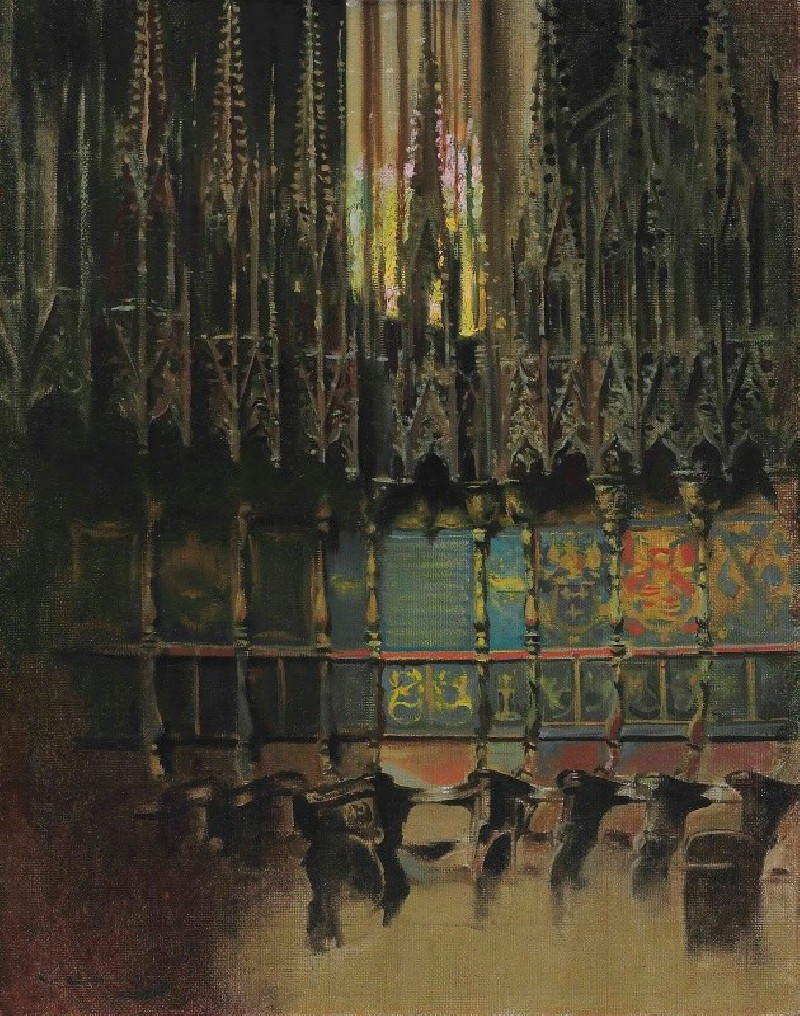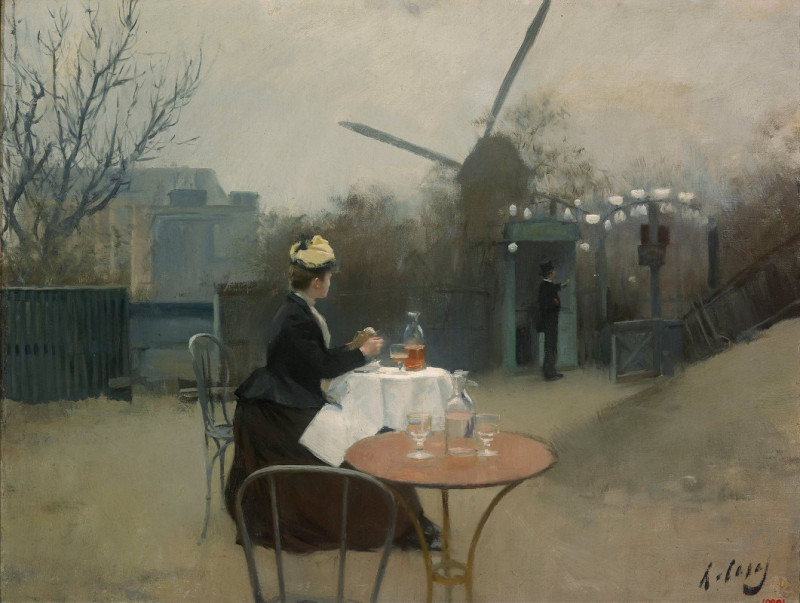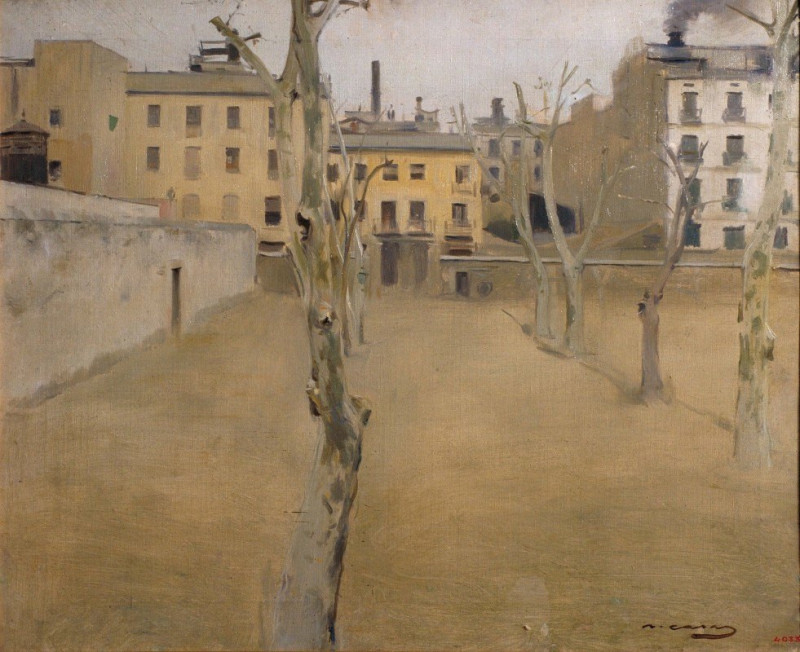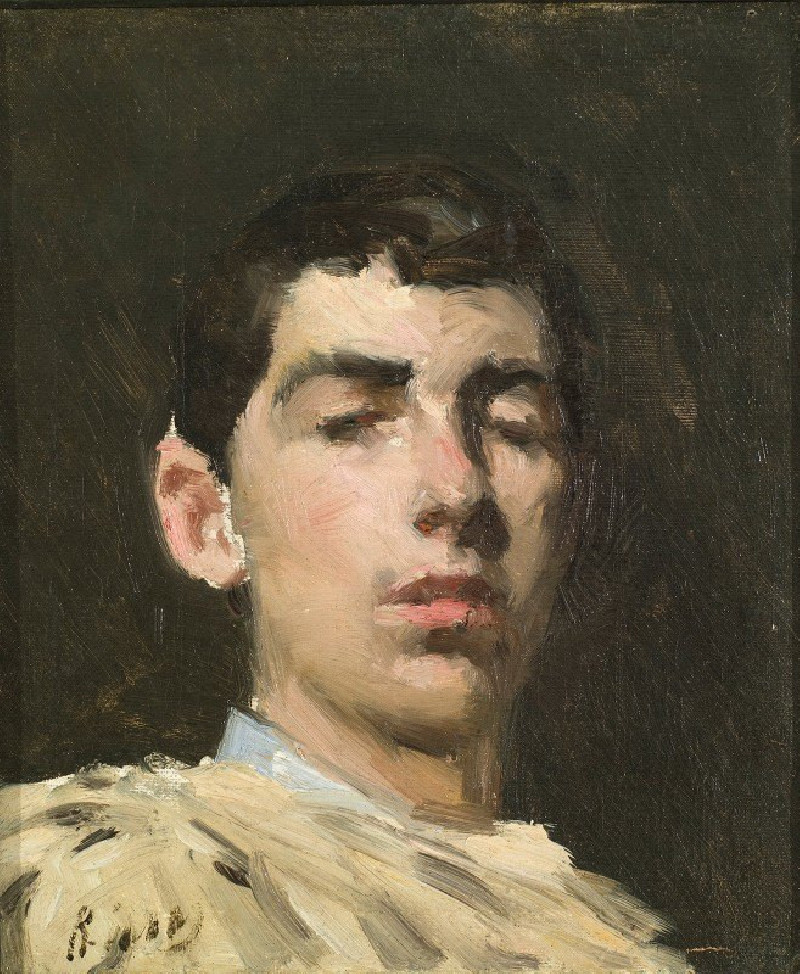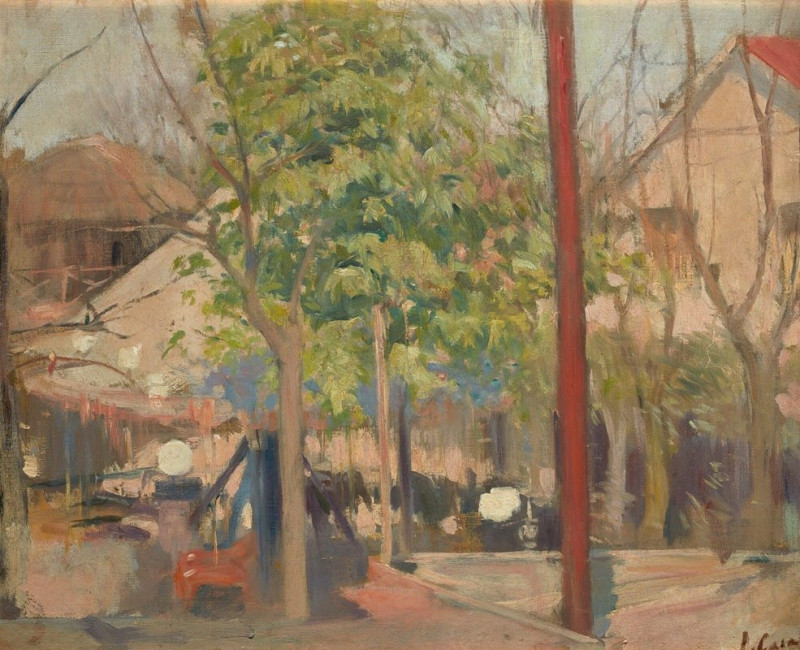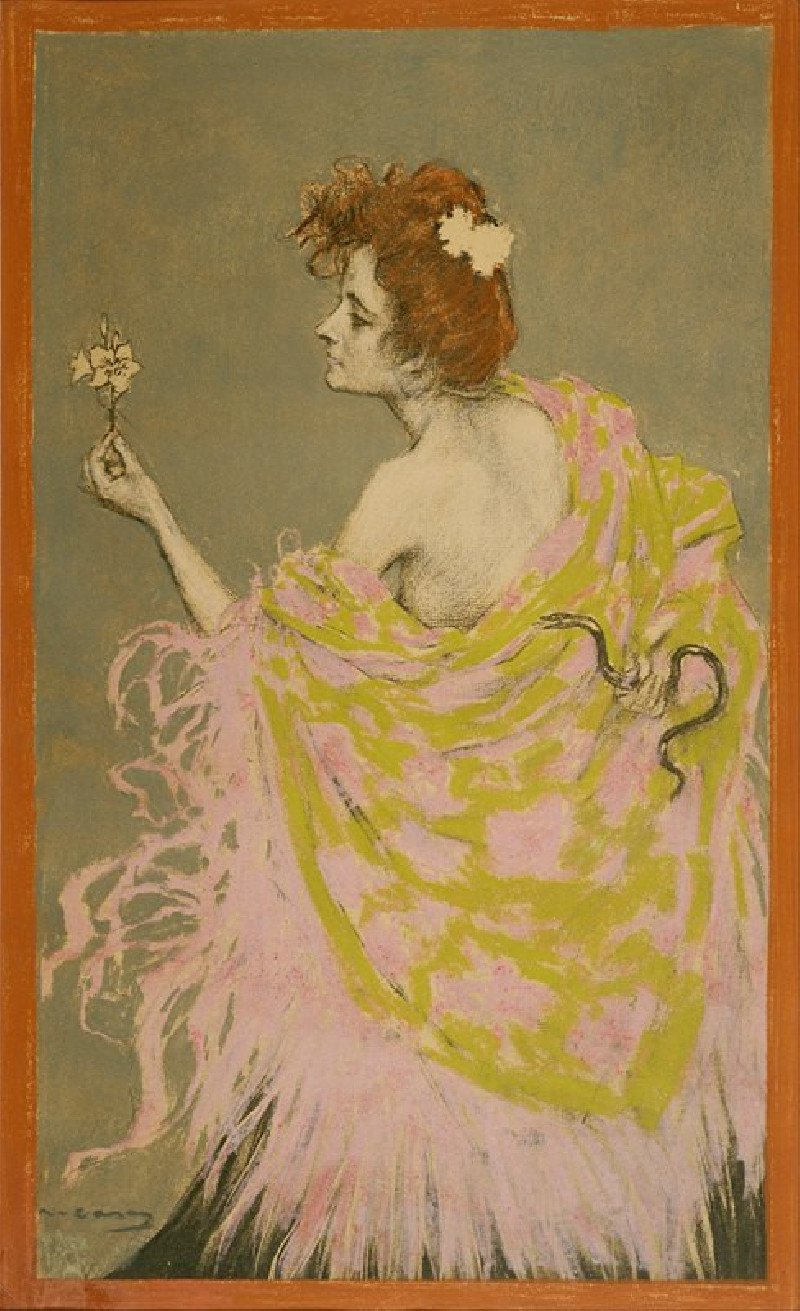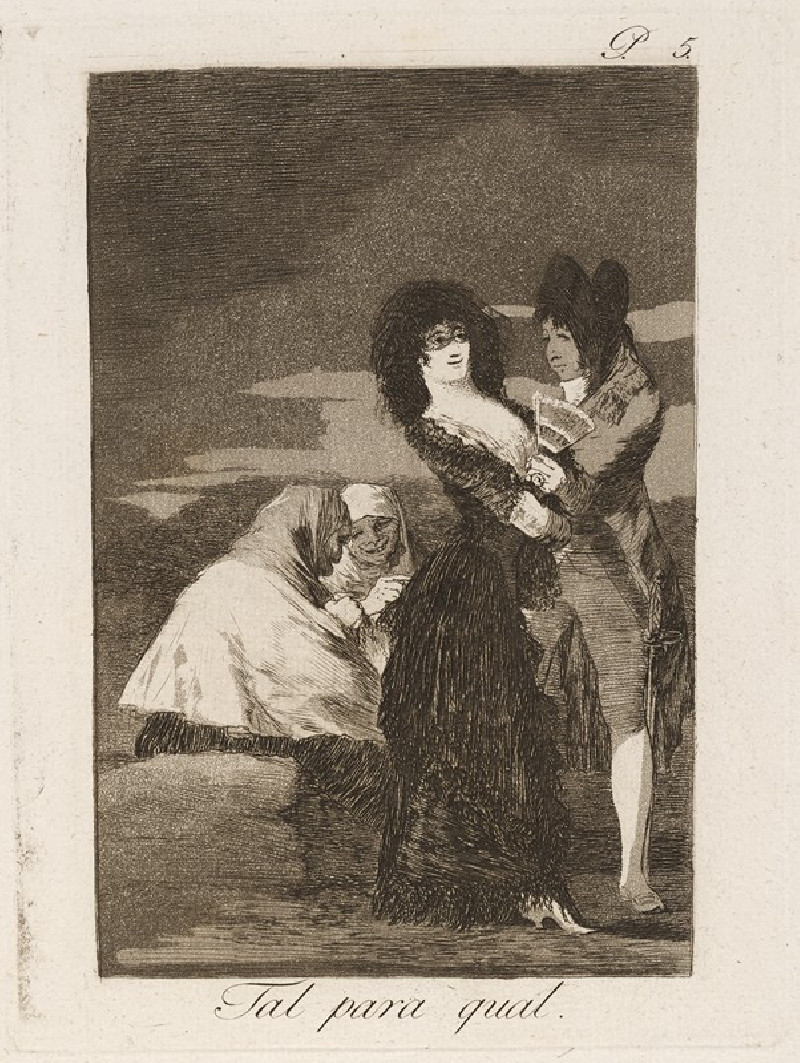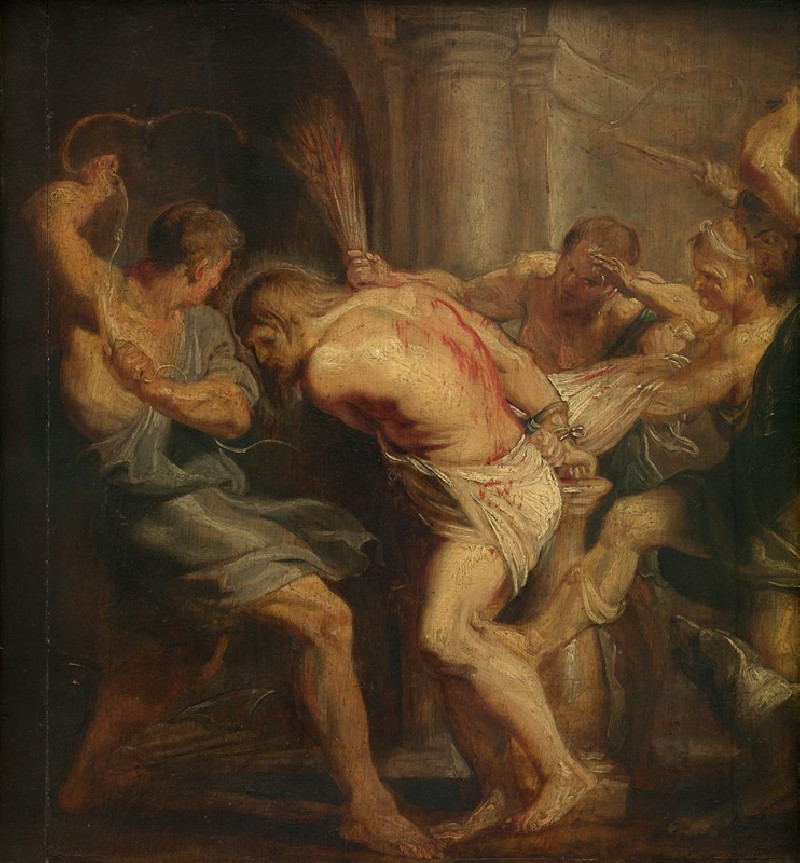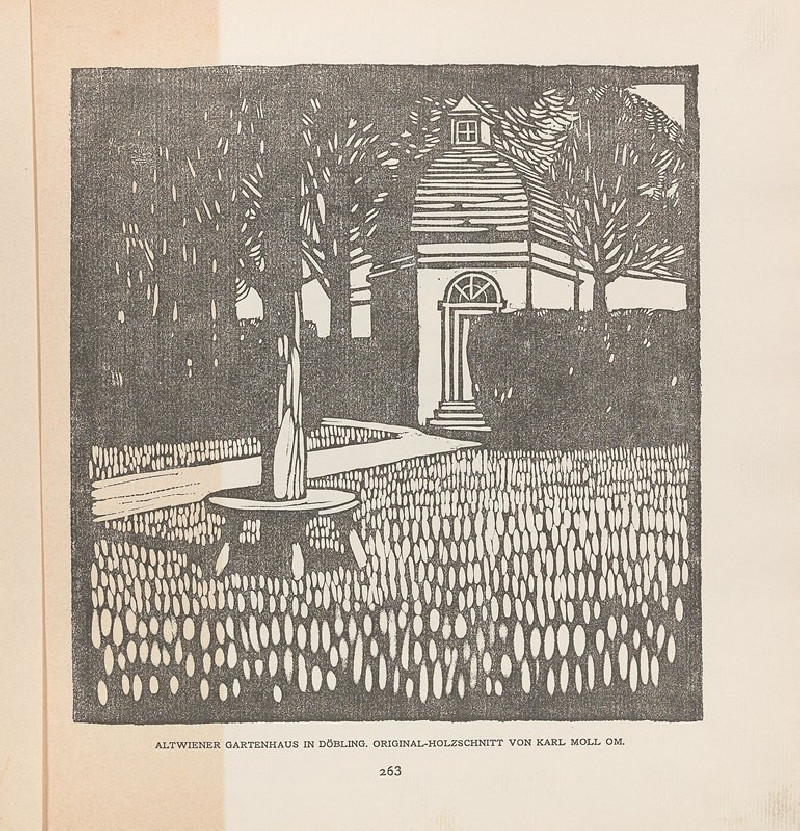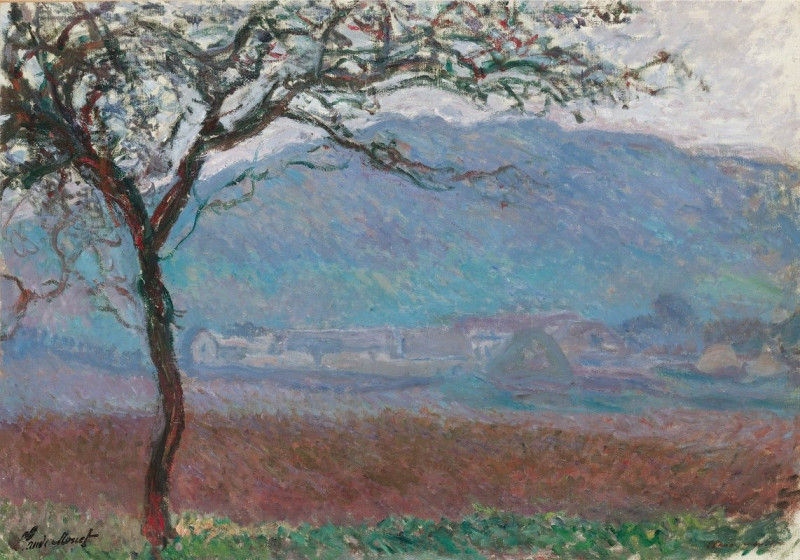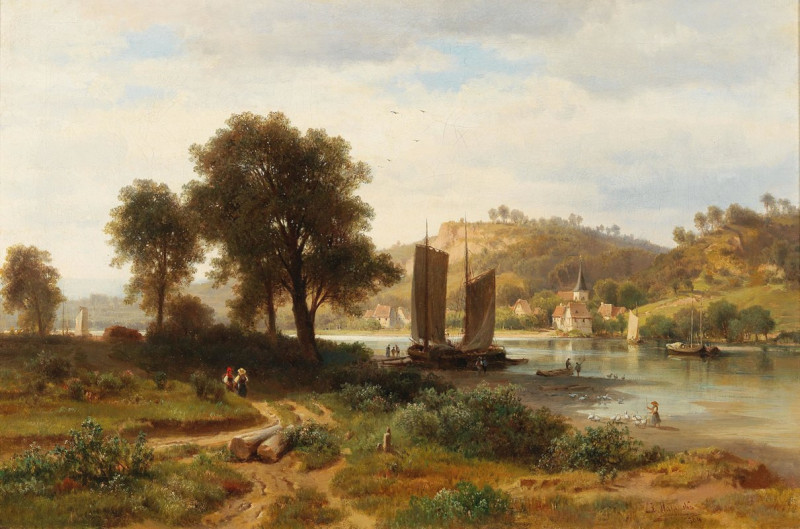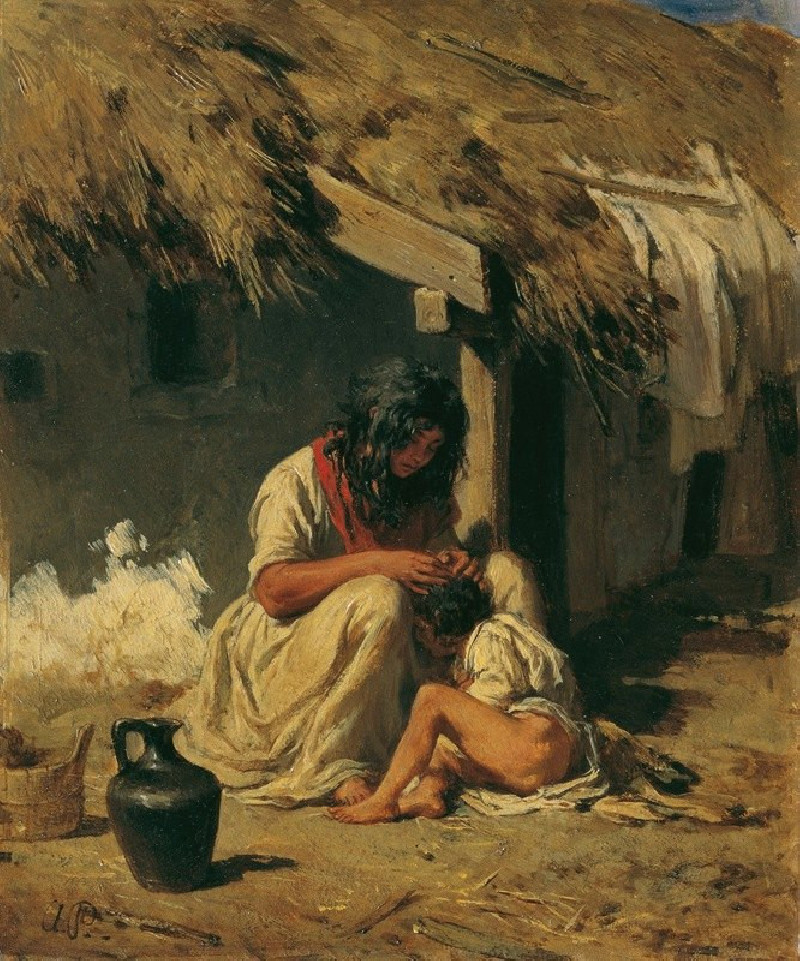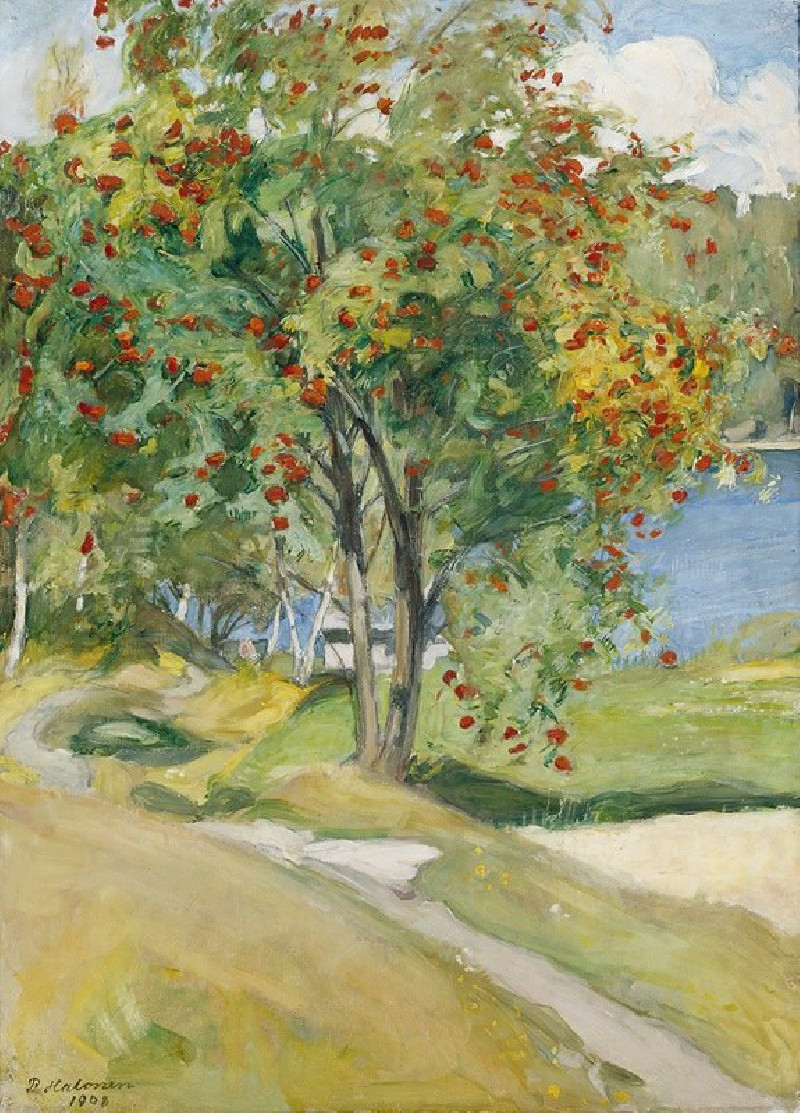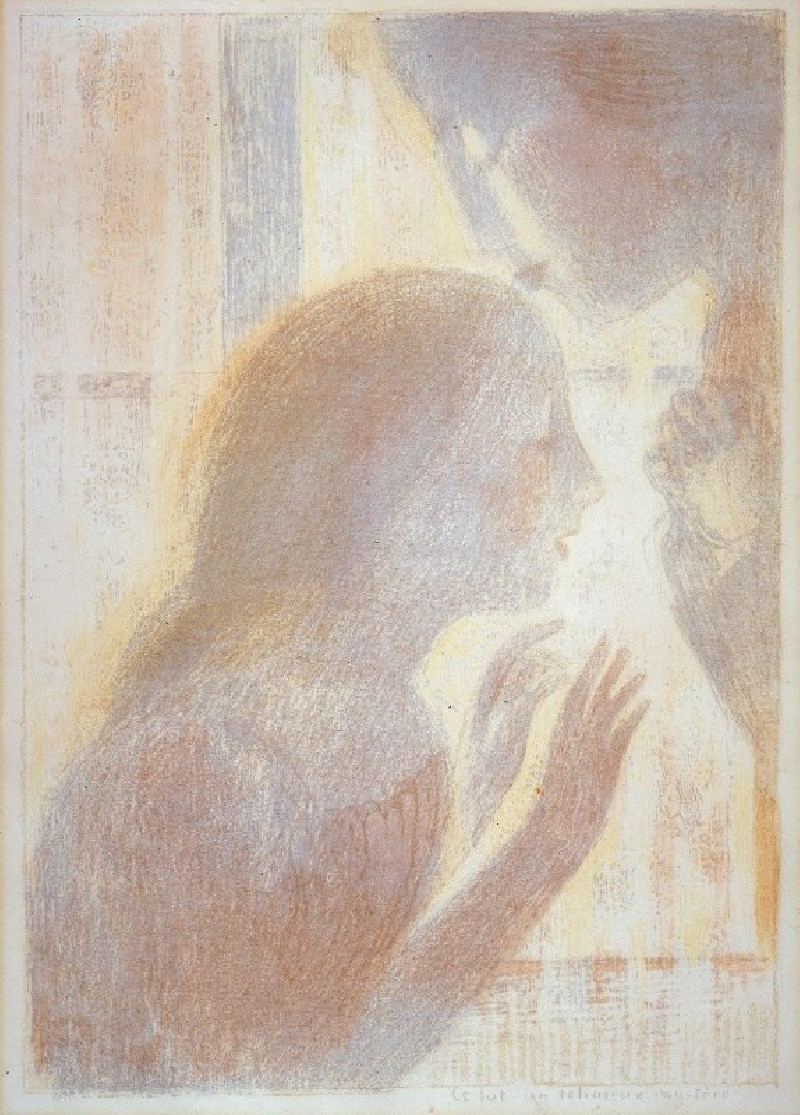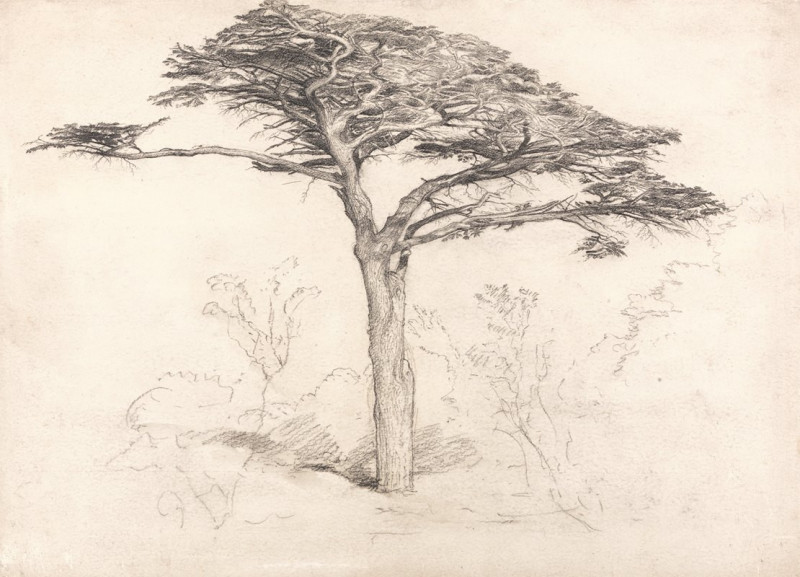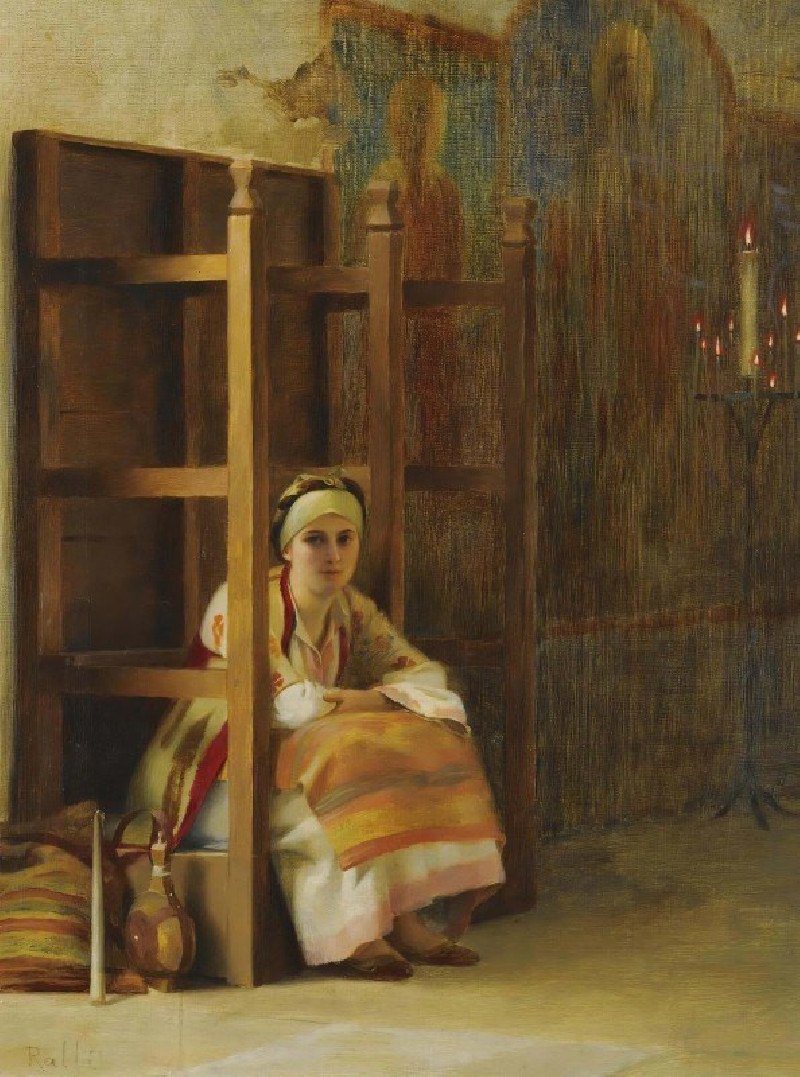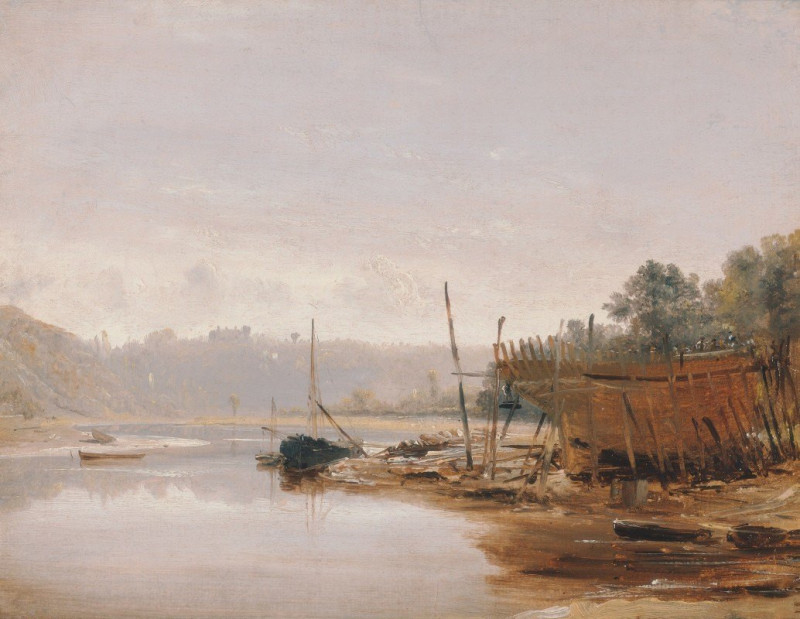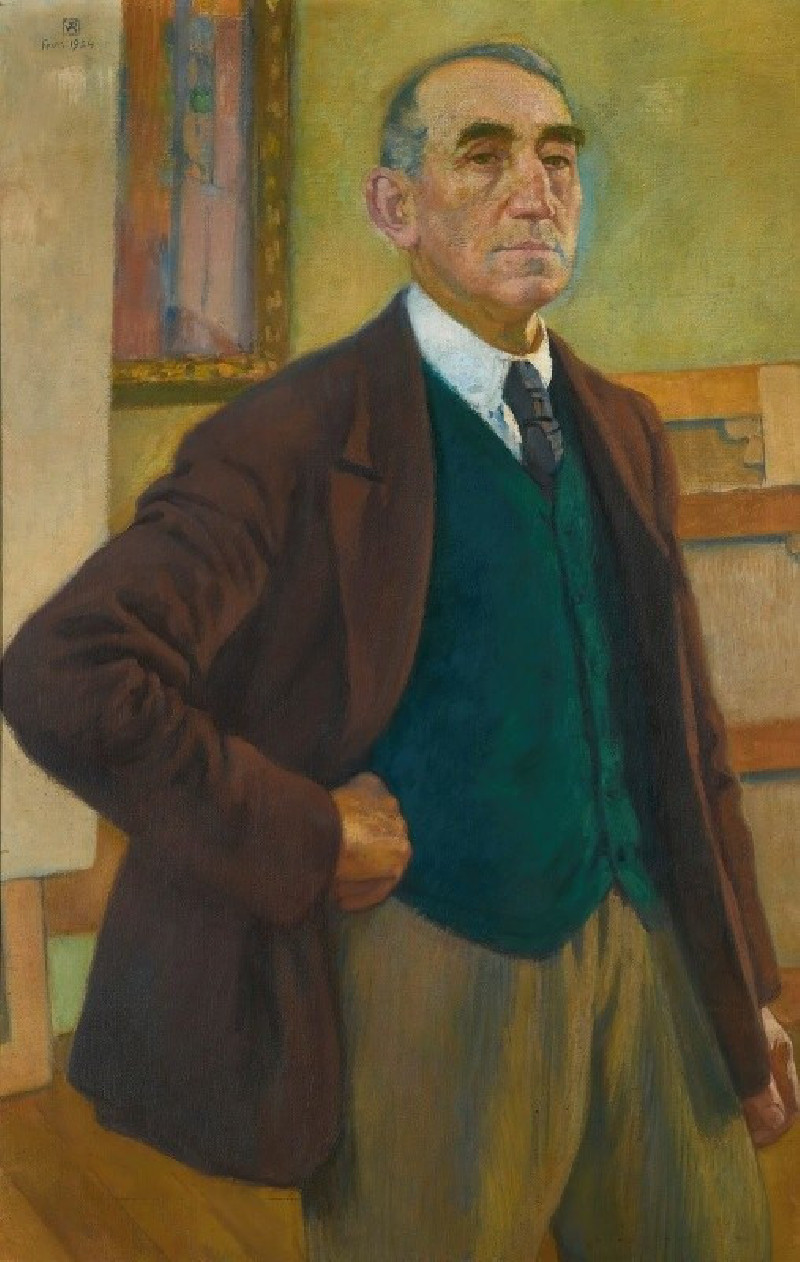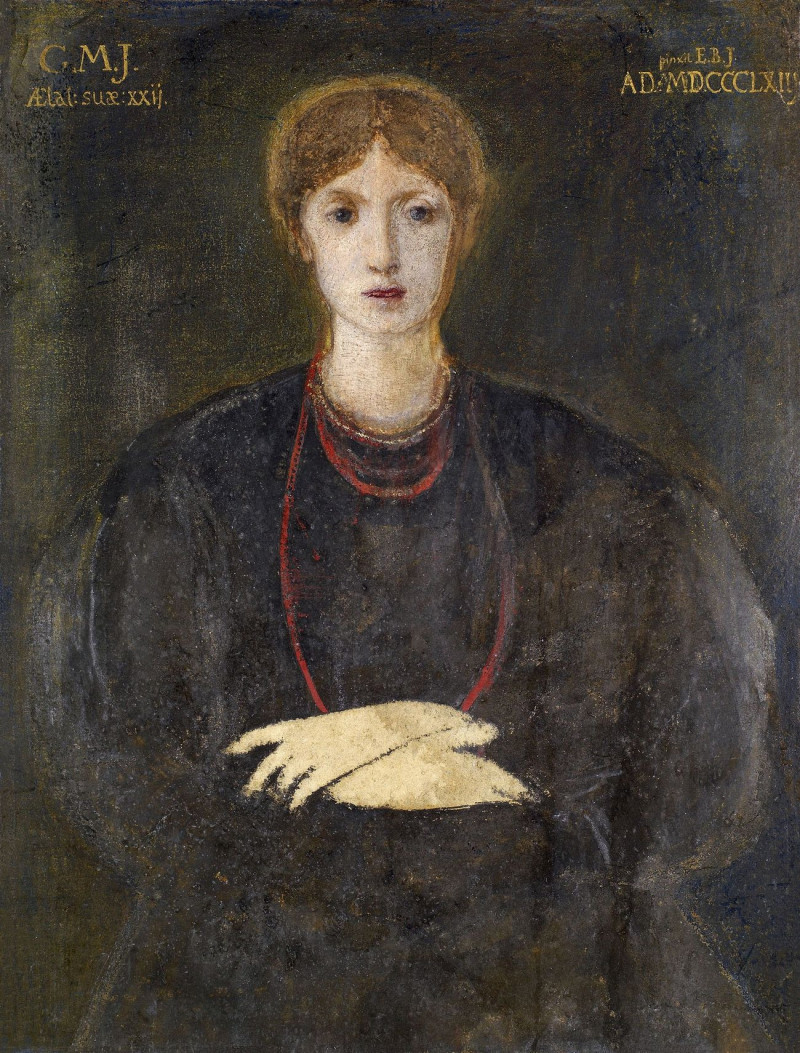Anís Del Mono (Con Una Falda De Percal Planchá) (In A Pressed Percale Skirt) (1898)
Technique: Giclée quality print
Recommended by our customers
More about this artwork
Ramón Casas, a pivotal figure in the Catalan modernisme movement, brings to life a captivating piece in his 1898 painting "Anís Del Mono (Con Una Falda De Percal Planchá)" (In A Pressed Percale Skirt). In this striking work, the soft allure of Art Nouveau merges fluently with a bold advertisement approach—a testament to Casas's mastery in blending commercial and fine art.The painting features a sophisticated woman captured from behind, her figure cloaked in an elegant, sweeping skirt featuring intricate lace and floral detailing. The vibrant red of her skirt contrasts strikingly against the soft greens and neutrals of the background, drawing the viewer’s eye to the flowing lines and ornamental patterns that adorn her attire.Adding an unexpected and whimsical element to the composition is a monkey, who gently lifts a glass of Anís del Mono, a popular Spanish anise-flavored liqueur, to the woman's lips. The monkey, dressed as a butler with a playful yet precise posture, symbolizes the blend of exotic and familiar, a common theme in advertisements of the era aiming to intrigue and captivate potential consumers.This painting not only showcases Casas's refined aesthetic sensibilities and skillful use of color but also serves as a creative advertisement for Vicente Bosch's Anís del Mono liquor, as noted by the text and logos integrated seamlessly within the artwork. Despite its commercial intent, "Anís Del Mono" holds its own as a piece of art, inviting viewers to appreciate the beauty and cultural richness embedded within a simple moment of indulgence.
Delivery
Returns
Ramon Casas i Carbó was a Catalan artist. Living through a turbulent time in the history of his native Barcelona, he was known as a portraitist, sketching and painting the intellectual, economic, and political elite of Barcelona, Paris, Madrid, and beyond. He was also known for his paintings of crowd scenes ranging from the audience at a bullfight to the assembly for an execution to rioters in the Barcelona streets (El garrot). Also a graphic designer, his posters and postcards helped to define the Catalan art movement known as modernisme.

